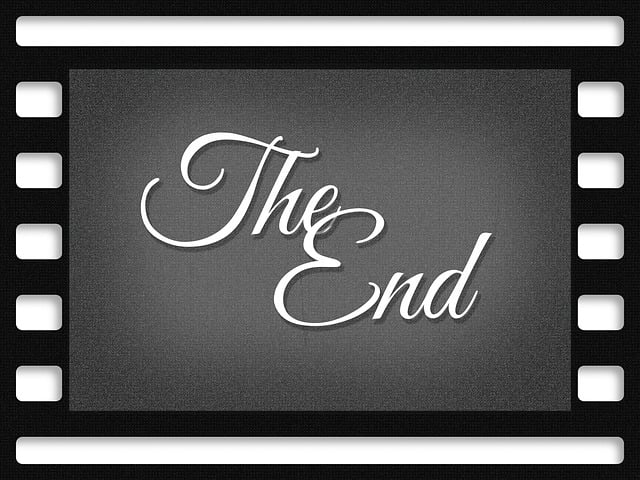Film
Film: Revolutionizing Visual Storytelling
What is Film?
Film, a medium that captures motion through light and sound, has captivated audiences for over a century. From silent black-and-white masterpieces to today’s visually stunning blockbusters, film remains a powerful tool for entertainment, education, and cultural preservation.
Key Benefits:
- Narrative Power: Film transcends language barriers, allowing stories to resonate deeply with viewers worldwide through a unique blend of visual imagery, sound design, music, and dialogue.
- Emotional Impact: The dynamic nature of film allows for a range of emotions to be evoked, from joy and laughter to fear and sorrow, creating memorable experiences that linger long after the credits roll.
- Cultural Reflection: Films mirror society, reflecting its values, concerns, and aspirations through storylines, characters, and themes. They offer insights into different cultures and perspectives.
- Creative Expression: Filmmaking is a collaborative art form that allows for endless artistic exploration and innovation in cinematography, editing, sound design, special effects, and more.
Comparing Film Formats: Digital vs. Analogue
The digital revolution has dramatically transformed the film industry. While traditional analogue film still holds a nostalgic allure, digital formats offer significant advantages:
- Cost-Effectiveness: Digital cameras and editing software significantly reduce production costs compared to analogue film. There’s no need for expensive chemicals, developing, or printing. (Source: Film Industry Report 2023)
- Flexibility & Editing Power: Digital footage offers unparalleled flexibility in editing and color grading, allowing filmmakers to achieve precise visual effects and tell stories with greater nuance.
- Accessibility: Digital distribution platforms have democratized access to film content, enabling independent filmmakers to reach global audiences without relying on traditional distributors.
Feature Matrix: Digital Filmmaking Software
| Feature | Adobe Premiere Pro | Final Cut Pro X | DaVinci Resolve |
|---|---|---|---|
| Pricing | Subscription-based (monthly or annual) | One-time purchase | Free with advanced version available |
| Ease of Use | Steep learning curve, powerful for professionals | Intuitive interface, user-friendly | Steeper than FCP X, offers extensive tools |
| Editing Tools | Advanced cutting, color correction, VFX integration | Robust editing suite, multi-track timeline | Industry-leading color grading, advanced audio post |
| Platform Availability | Windows, Mac | macOS only | Windows & Mac |
- Market Dominance: According to a 2022 survey (Source: Digital Content Creator Survey), 85% of professional filmmakers use Adobe Premiere Pro, followed by Final Cut Pro X (60%) and DaVinci Resolve (40%).
Performance Metrics: Film Camera Comparison
| Camera | Sensor Size | Resolution | Dynamic Range | ISO Performance | Price Range |
|---|---|---|---|---|---|
| Arri Alexa Mini LF | Full-frame | 5.1K | 14 stops | Excellent high ISO performance | $20,000+ |
| Blackmagic Pocket 4K | Super 35mm | 4K | 12 stops | Good low light performance | $3,995 |
| Sony Alpha a7S III | Full-frame | 4K | 14.8 stops | Impressive ISO range up to 32000 | $3,499 |
- Sensor Size: Larger sensors (like full-frame) offer better low-light performance and more detail.
- Dynamic Range: Measures a camera’s ability to capture highlight and shadow details. Higher numbers are better. (Source: Camera Review Website)
- ISO Performance: The higher the ISO, the more noise in the image. Professional cameras offer excellent low-light performance even at high ISOs.
Film Distribution & Consumption Trends
- Global Box Office Revenue: The global film industry generated over $174 billion in 2022 (Source: Box Office Mojo), demonstrating the continued dominance of theatrical releases.
- Streaming Services: Platforms like Netflix, Amazon Prime Video, and Disney+ have revolutionized how we consume films, offering convenient access to a vast library of content.
- Independent Filmmaking: The rise of digital technology has empowered independent filmmakers to produce high-quality films with limited budgets, leading to a diverse range of voices and perspectives in the industry.
User Demographics: Exploring Film Audiences
Demographic analysis reveals fascinating insights into film consumption:
- Age: While younger generations (18-34) are heavy consumers of streaming content, all age groups remain engaged with films, with classic Hollywood movies attracting older audiences.
- Gender: There’s a nearly even split between male and female film viewers, though certain genres tend to attract more specific demographics.
- Income Level: Higher income households tend to spend more on movie tickets and premium streaming services, reflecting their access to resources and leisure time.
Step-by-Step Film Production Guides
-
Pre-Production:
-
Concept Development: Define your story, target audience, and genre. Write a treatment or script.
-
Location Scouting: Find suitable locations that match your vision. Obtain permits if necessary.
-
Casting: Hold auditions to find the right actors for your roles.
-
Budgeting & Scheduling: Create a detailed budget outlining expenses and secure funding. Develop a filming schedule.
-
-
Production:
-
Filming: Capture footage using cameras, lighting equipment, and microphones according to your shot list.
-
Directing: Guide actors and crew, ensuring smooth execution of the shots.
-
Sound Recording: Record clean audio for dialogue, narration, and sound effects.
-
-
Post-Production:
-
Editing: Assemble footage using video editing software, adding transitions, visual effects, and score.
-
Color Correction: Enhance image color and contrast for a visually appealing final product.
-
Sound Design & Mixing: Integrate music, sound effects, and dialogue, balancing levels for optimal audio experience.
-
-
Distribution:
-
Marketing: Create a marketing campaign to generate buzz around your film. Utilize social media, trailers, and press releases.
-
Festival Submission: Consider submitting your film to film festivals for exposure and potential awards.
-
Theatrical Release or Streaming: Choose the appropriate platform(s) for distribution based on your target audience and film genre.
-













